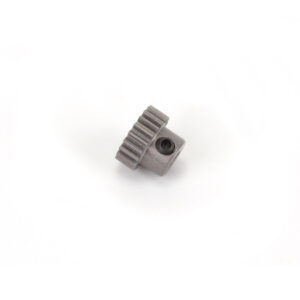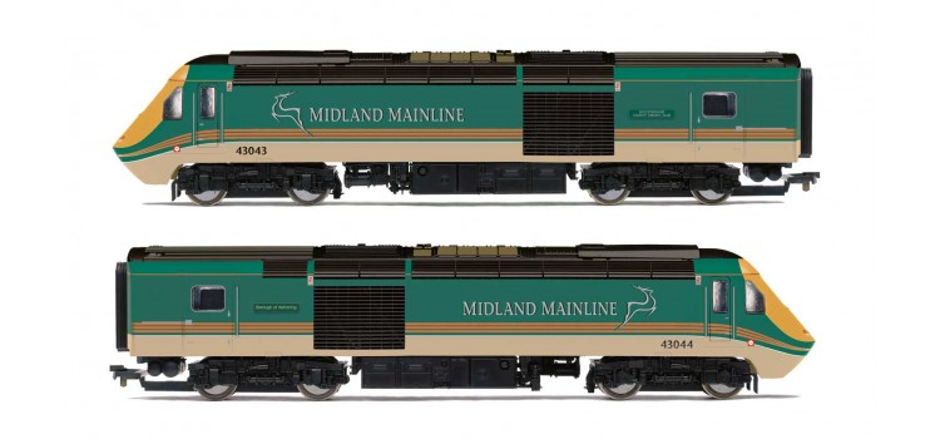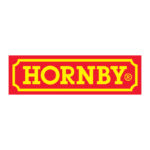You are here:
Hornby R3270 HST 125 Midland Mainline Class 43 Teal Green
Hornby R3270 HST 125 Midland Mainline Class 43 Teal Green
Out of stock
Description
Hornby R3270 HST 125 Midland Mainline Class 43 Teal Green
Midland Mainline Class 43 HST
as a cheaper and more reliable alternative to the Advanced Passenger Train in the early 1970s, the British Railways Board authorised the development of a prototype High Speed Diesel Train with two locomotives designated as Class 41. These aerodynamic power cars were constructed by BREL at their Crewe Works and outshopped in June and August 1972 were fitted with Paxman “Valenta” 12RP200L engines which developed 2,250 hp. After a short period the Mk3 passenger cars from BREL’s Derby Litchurch Lane Works completed the prototype set which became British Rail Class 252.
The power cars having initially been numbered 41001 and 41002n were later given the coaching stock numbers 43000 and 43001 for operating trials on the Eastern Region and subsequent transfer to the Western Region. This prototype InterCity 125 clinched the world record for traction of 143mph (230kmh)on the 12th June 1973.
Following evaluation of this prototype design and a change of name to High Speed Train, British Rail placed orders for similar trains for use on the Western, Eastern, Scottish and London Midland Regions.
When originally built at BREL Crewe Works, the InterCity 125 units were considered to be diesel multiple units and allocated the Class 253 to the Western Region and the Class 254 for the Eastern Region as it was envisaged that the sets would remain in fixed formation.
Those original HST’s consisted of a Driving Motor Brake (DMB), Trailer Firsts (TF), Trailer Seconds (TS), Trailer Restaurant Unclassified Kitchen (TRUK) and a Trailer Restaurant Second Buffet (TRSB). Once the Trailer Guard Second (TGS) were introduced the later power cars had no guard’s equipment installed. By 1987 most power cars were simply classified as Driving Motor (DM), although they still had luggage van space, retaining a window by the luggage door on each side.
Following problems with the power cars and the operational ease of removing power cars to perform scheduled maintenance, unit formations were abandoned and from then on HSTs were considered to be formed of two power cars with a rake of Mk3 carriages in between resulting in the Class 43 locomotive prefix being adopted.
The 197 Class 43 power cars produced between 1976 and 1982 were numbered 43002 to 43198 and are officially the fastest diesel units in the World. The units have an absolute maximum speed of 148mph (238kph), which is the current world diesel traction record and was set on the 1st November 1987. The top speed of the HSTs during regular service is 125mph (200kph).
Prior to the introduction of HSTs the maximum speed of British trains were limited to 100mph (160kph). The increased speed and rapid acceleration and deceleration of the Class 43 locomotives made them ideal for passenger use and journey times around the country were slashed. Class 43 driven services replaced stock on the West Coast Main Line, East Coast Main Line and later the Midland Main Line, although it was not always possible to operate to their full potential.
In 1987, for trial purposes 8 Class 43s were converted for use as Driving Vehicles with the Class 89 and Class 91 locomotives. The power cars were fitted with buffers and Time division Multiplex (TDM) equipment that allowed them to directly control the other locomotive. Following the delivery of Mk4 stock the TDM equipment was re4moved and the power cars reverted to their normal duties.
During the late 1990s, 25 Class 43s were re-engined with Paxman 12VP185L engines in an attempt to reduce fuel consumption and emissions; however these proved to be less reliable in service than was hoped.
In 2007 Brush Traction and Hitachi Limited equipped Paxman “Valenta” powered 43089 and semi-permanently coupled Mk3 coach with a diesel-battery hybrid power systems for trials with Network Rail’s New Measurement Trains.
The HST fleet has seen several changes to the operating companies since privatisation in 1993. Former operators include Midland Mainline, Virgin, Cotswold Rail, Cross Country and Great North Eastern Railway Class 43 driven sets continue to operate nationwide courtesy of First Great Western, East Coast, East Midlands Trains, Grand Central, Cross-Country and Network Rail.
Midland Mainline was the franchise operator for services between London St. Pancras to the Midlands, including the cities of Nottingham, Leicester, Derby and Sheffield from 1996 – 2007. The livery of both the drive units and the coaches incorporated on the Hornby model was the inaugural colour scheme used for the company and its rolling stock.
Model Specification
Hornby R3270 HST 125 Midland Mainline
| Gauge | 00 |
| Length | 2 x 235mm |
| DCC Type | DCC Ready |
| Lighting | Bi-directional front white (3 of) rear red (2 of) |
| Period/ERA | Era6 – 11 – Pre and Post – Privatisation |
| Operator/Livery | Midland Mainline Teal Green Livery |
| Designer | Sir Kenneth Grange |
| Entered Service | 1978 |
| Minimum Curve | R2 |
| Motor | 5 Pole Skew Wound |
| Wheel Configuration | Bo-Bo |
| No of Axles Driven | Motorised Car – 4 driven through double flywheel and Cardan driveshafts |
| Cab | Detailed and internal LED lighting with cab doors |
| Drive | Drive on all axles of the motorised car using Cardan shafts coupling from motor to drive boggy gearboxes. |
| Build Structure | Plastic body and cast alloy chassis on the motorised car with plastic chassis on the non-motorised cars. Roof body and bogie detailing. |
| Age Suitability | 14+ years |
Additional information
| Weight | 3000 g |
|---|---|
| Brand | Hornby |
| Condition | Pre-Owned |
| Scale | OO/HO Gauge |
Related Products
Related products
-

Schumacher U3425 PINION HARD ALLOY 48DP – 25T
£3.99Out of stock





